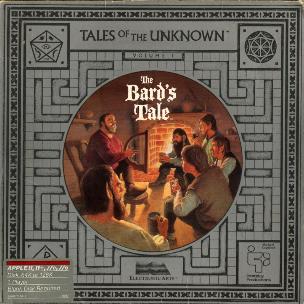
The Bard's Tale is a fantasy role-playing video game designed and programmed by Michael Cranford for the Apple II. It was produced by Interplay Productions in 1985 and distributed by Electronic Arts. The game was ported to the Commodore 64, Apple IIGS, ZX Spectrum, Amstrad CPC, Amiga, Atari ST, DOS, Macintosh, and NES. It spawned The Bard's Tale series of games and books. The earliest editions of the game used a series title of Tales of the Unknown, but this title was dropped for later ports of The Bard's Tale and subsequent games in the series.

Interplay Entertainment Corp. is an American video game developer and publisher based in Los Angeles. The company was founded in 1983 as Interplay Productions by developers Brian Fargo, Jay Patel, Troy Worrell, and Rebecca Heineman, as well as investor Chris Wells. As a developer, Interplay is best known as the creator of the Fallout series and as a publisher for the Baldur's Gate and Descent series.

Skate or Die! is a skateboarding video game released by Electronic Arts (EA) in 1987 for the Commodore 64. It is EA's first internally developed game. Versions for the Apple IIGS, MS-DOS, Amstrad CPC, and ZX Spectrum followed. It was ported to the Nintendo Entertainment System by Konami, published under the company's Ultra Games branding.

Frank Brian Fargo is an American video game designer, producer, programmer and executive, and founder of Interplay Entertainment, inXile Entertainment and Robot Cache.

Ghostbusters is a licensed game by Activision based on the film of the same name. It was designed by David Crane and released for several home computer platforms in 1984, and later for video game console systems, including the Atari 2600, Master System and Nintendo Entertainment System. The primary target was the Commodore 64 and the programmer for the initial version of the game was Adam Bellin. All versions of the game were released in the USA except for the Amstrad CPC and ZX Spectrum versions, which were released only in Europe, and the MSX version, which was released only in Europe, South America, and Japan.

Mortville Manor is a point-and-click adventure game developed and published by Lankhor released in 1987 for Atari ST. The game was ported to the Amstrad CPC, Amiga and Sinclair QL. An MS-DOS version was released in 1988 adapted by Clement Roques. Mortville Manor was the first game with speech synthesis and was sold 10,000 copies around Europe. Mortville Manor was followed by its sequel Maupiti Island.

Dragon Wars is a fantasy role-playing video game developed by Rebecca Heineman and published by Interplay Productions in 1989 and distributed by Activision.
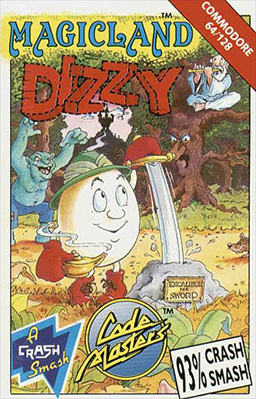
Magicland Dizzy is a platform adventure game published in Europe in 1990 by Codemasters for the ZX Spectrum, Commodore 64 and Amiga platforms. By 1992 there were also MS-DOS, Atari ST and Amstrad CPC versions available. It is the sixth game in the Dizzy series, and the fourth adventure-based Dizzy title. The story, set in a fantasy world called Magicland, follows on from the events of Fantasy World Dizzy, the previous adventure title. In Magicland Dizzy the player controls Dizzy, an egg-shaped character, who is trying to save six of his friends who have been placed under spells by the Evil Wizard Zaks.

Rebecca Ann Heineman is an American video game designer and programmer. Heineman was a founding member of video game companies Interplay Productions, Logicware, Contraband Entertainment, and Olde Sküül. She has been chief executive officer for Olde Sküül since 2013.

Spindizzy is an isometric video game released for several 8-bit home computers in 1986 by Electric Dreams Software. It combines action and puzzle video game elements. Players must navigate a series of screens to explore a landscape suspended in a three-dimensional space. Development was headed by Paul Shirley, who drew inspiration from Ultimate Play the Game games that feature an isometric projection.

Wonder Boy is a 1986 platform game published by Sega and developed by Escape. Originally designed for arcades, it was later ported to the SG-1000, Mark III/Master System and Game Gear video game consoles by Sega, and to the ZX Spectrum, Commodore 64 and Amstrad CPC home computers by Activision. The game is also known as Super Wonder Boy for its Sega Mark III release in Japan and Revenge of Drancon for its Game Gear release in North America. A high definition remake of the game, titled Wonder Boy Returns, was developed by CFK and released on Steam on October 12, 2016. Wonder Boy was rereleased in 2022 as part of Wonder Boy Collection for the Nintendo Switch and PlayStation 4 which includes its versions on arcade, Master System, SG-1000 and Game Gear.

Maupiti Island is a point-and-click adventure game developed and published by Lankhor. It was released in 1990 and is the sequel to Mortville Manor. The player controls Jérôme Lange, a detective who attempting to solve a crime by interacting with various characters and collecting clues while further events unveil a complex plot.
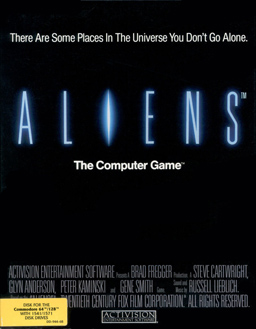
Aliens: The Computer Game is a 1986 video game developed and published by Activision for the Commodore 64, Apple II based on the film of the same title. As Activision's UK subsidiary Electric Dreams Software had independently released their own version of the game with the same title, the game was renamed for European release. Initially planned to be released as Aliens: The Second Part., it was finally published under the title Aliens: US Version with ports for the Amstrad CPC and ZX Spectrum produced by Mr Micro.
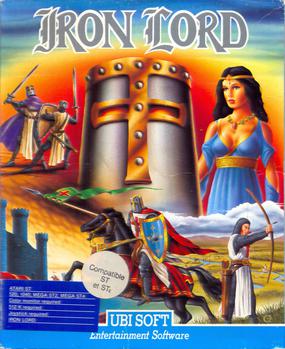
Iron Lord is an adventure video game developed by Orou Mama and Ivan Jacot for the Atari ST and published by Ubi Soft in 1989. It was ported to the Amiga, Acorn Archimedes, Amstrad CPC, Commodore 64, ZX Spectrum, and MS-DOS.

GBA Championship Basketball: Two-on-Two is a 1986 computer basketball game for the PC, Amiga, Apple II, Apple IIGS, Amstrad CPC, Atari ST, ZX Spectrum and Commodore 64. It was developed by Dynamix and published by Activision.

Mindfighter is a text adventure game developed by British studio Abstract Concepts and published by Activision in 1988 for the Amiga, Commodore 64, Amstrad CPC, Amstrad PCW, Atari ST, MS-DOS, and the ZX Spectrum computers.
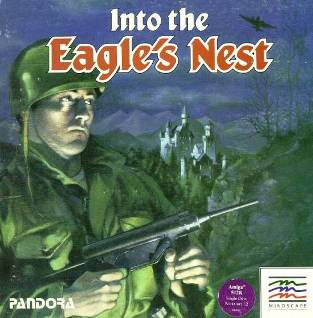
Into the Eagle's Nest is a video game developed by Pandora and published for Amiga, Amstrad CPC, Apple II, Atari 8-bit computers, Atari ST, Commodore 64, IBM PC compatibles, and ZX Spectrum starting in 1987.

Borrowed Time is a interactive fiction game about a detective, who tries to rescue his kidnapped wife. The game was developed by Interplay and published by Activision in 1985. Mastertronic republished it as a budget title under the name Time to Die.
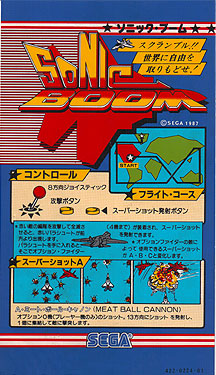
Sonic Boom is a vertical scrolling shooter developed by Sega and released in the arcades in 1987. Home computer versions for the Amiga, Atari ST, Amstrad CPC, Commodore 64 and ZX Spectrum were released in 1990 by Activision. The original arcade version was released on the Sega Astro City Mini console in 2021.

Ghostbusters II is a 1989 action game based on the film of the same name. It was published by Activision for various computer platforms. British studio Foursfield developed a version for Commodore 64, Amiga, Atari ST, Amstrad CPC and ZX Spectrum, which also got ported to the MSX by New Frontier. It features three levels based on scenes from the film. Dynamix developed a separate version for the DOS, also based on the film. The non-DOS versions were praised for the graphics and audio, but criticized for long loading times, disk swapping, and the final level. The DOS, Commodore 64 and Amiga versions were the only versions released in North America.





















